Ethique
et sens moral.
1 – The child's moral sense :
Theory of mind :
Theory of mind refers to the ability in cognitive science to attribute unobservable mental states (e.g. intention, desire, belief1......) to oneself or to other individuals. The affective or cognitive states of others are then inferred on the basis of their emotional expressions, attitudes or assumed knowledge of reality.
This ability plays a key role in social interactions - communication, empathy, collaboration, teaching, competition etc.
https://fr.wikipedia.org/wiki/Th%C3%A9orie_de_l%27esprit
Jonathan Haidt :(born 1963 in New York) is an American social psychologist and professor of ethics. His studies focus on morality.
He was an assistant professor at the University of Virginia from 1995 to 2011 and later taught at the Stern School of Business at New York University.
https://fr.wikipedia.org/wiki/Jonathan_Haidt
Amoral : foreign to morality (Dic. Robert).
Immoral : violating the principles of established morality (Dic. Robert).
Law of Talion : 'Talion' comes from the Latin 'talis' which means 'such' or 'like'.
The "Law of Talion" is described in 1730 BC in the code of Hammurabi, then king of Babylon (1792 and 1750 BC). This law encouraged individual revenge, provided that the punishment was identical to the crime committed. Thus, if a man had his hand cut off, the Law of Talion allowed him to do the same to his enemy. Previously, there was nothing to indicate that the revenge had to be equal to the harm suffered, it could be much greater. "An eye for an eye, a tooth for a tooth' means that you want to exact revenge on someone equal to what they have done to you.
These prescriptions are found in the Old Testament :
Exodus 21.22
If people are fighting and hit a pregnant woman and she gives birth prematurely but there is no serious injury, the offender must be fined whatever the woman’s husband demands and the court allows.
Exodus 21.23
But if there is serious injury, you are to take life for life,
Exodus 21.24
eye for eye, tooth for tooth, hand for hand, foot for foot,
Exodus 21.25
burn for burn, wound for wound, bruise for bruise.
Leviticus 24.17
Anyone who takes the life of a human being is to be put to death.
Leviticus 24.18
Anyone who takes the life of someone’s animal must make restitution—life for life.
Leviticus 24.19
Anyone who injures their neighbor is to be injured in the same manner :
Leviticus 24.20
fracture for fracture, eye for eye, tooth for tooth. The one who has inflicted the injury must suffer the same injury.
Deuteronomy 19:21
Show no pity : life for life, eye for eye, tooth for tooth, hand for hand, foot for foot.
Contrary to appearances, the commandment "An eye for an eye, a tooth for a tooth", is not an incentive or a right to exact revenge, but a limitation of the right to reparation of damages.
This system of applying penalties limited to what has been suffered has prevented people from taking justice into their own hands, with the possibility of escalating responses.
The New Testament, on the other hand, takes a new look at this notion of punishment equivalent to the harm suffered.
The emphasis is on overcoming oneself.
Matthew 5 38 You have heard that it was said, ‘Eye for eye, and tooth for tooth'.
Matthew 5 39 But I tell you, do not resist an evil person. If anyone slaps you on the right cheek, turn to them the other cheek also.
Matthew 5 40 And if anyone wants to sue you and take your shirt, hand over your coat as well.
Matthew 5 41 If anyone forces you to go one mile, go with them two miles
Matthew 5 42 Give to the one who asks you, and do not turn away from the one who wants to borrow from you.
Matthew 5 43 You have heard that it was said, ‘Love your neighbor and hate your enemy.’
Matthew 5 44 But I tell you, love your enemies and pray for those who persecute you,
This message of tolerance is found in the Koran.
Koran 42/43 As-shoura : « And he who endures and forgives, this indeed is part of the good disposition and resolution in affairs ».
https://www.expressio.fr/expressions/oeil-pour-oeil-dent-pour-dent-loi-du-talion
http://www.linternaute.com/expression/langue-francaise/231/il-pour-oeil-dent-pour-dent/
https://www.bible-ouverte.ch/faq/faq-theme/qr-societe-politique-famille-ethique/510-reponse-135.html
Collaboration : Collaboration in adults is seen differently: while the head of state needs the citizen to reach the pinnacle of power, he may consider his work to be of greater value than that of his elector, even if the latter works much harder to feed him or provide him with the means to exercise his power. The same is true for the entrepreneur, or for the man compared to the woman.
Thus the scale of remuneration can reach a ratio of 1 to 2000.
In 2017, according to the British non-governmental organisation, Oxfam (Oxford Committee for Famine Relief), 82% of the world's wealth was held by the world's richest people, who make up just 1% of the population.
"Over the past ten years, ordinary working men and women have seen their incomes rise by an average of 2% a year, while the wealth of billionaires has increased by 13% a year, almost six times as fast," according to Oxfam. According to the study, it is women who are most affected by global inequality. Women workers are "at the very bottom of the pyramid": they earn less than men and generally have more precarious forms of work, Oxfam says.
Valence : The power of attraction (positive valence) or repulsion (negative valence) that an individual feels towards an object or situation. Valence and satisfaction value are closely related. A food will have a positive valence for a person who is hungry (Sill.1965).
Centration : Larousse dictionary :
Centration effect, overestimation of the stimulus or the part of the stimulus on which attention is focused.
Law of relative centrations, law stated by J. Piaget to account for the probability of perceptual deformations of a figure due to the effect of centration, according to the objective variations of the figure.
Textual and lexical resources (cntrl) :
Centration effect, overestimation of the stimulus or the part of the stimulus on which attention is focused.
Centration is the characteristic of preoperative thinking that causes the child to perceive only one aspect of a situation to the detriment of others.
Anna Freud : born on 3 December 1895 in Vienna and died on 9 October 1982 in London, was a psychoanalyst, born in Austria, exiled to England in 1938, and naturalised in Britain. She was the daughter of the psychoanalyst Sigmund Freud.
Masochism : the attitude of a person who seeks or delights in suffering or humiliation.
In this case, altruism requiring an effort, even a sacrifice of one's life for the other, would be motivated by a masochistic tendency.
C. Daniel Batson : born March 15, 1943, is an American social psychologist. He holds two doctorates, in theology (from Princeton Theological Seminary) and in psychology (from Princeton University's Department of Psychology). He is now Professor Emeritus in the Department of Psychology at the University of Tennessee and is known for his contributions in three areas: the social psychology of altruism, empathic concern and the psychology of religion.
https://en.wikipedia.org/wiki/Daniel_Batson
Robert B. Cialdini : born April 27, 1945, is an American social psychologist. He is known for his book on influence and marketing: Influence, the Psychology of Persuasion, published in France under the title Influence et manipulation.
https://fr.wikipedia.org/wiki/Robert_Cialdini
Immutable theory : « A theory that is not refutable by any conceivable event is devoid of scientific character. For theories, irrefutability is not (as is often imagined) a virtue but a defect. » Karl Popper
Example of irrefutable statements:
- Altruism requires effort and often suffering, so all altruism is a form of masochism.
- Altruism generates rewards or social recognition, so all altruism is a form of selfishness.
Sulcus : the groove between the brain's convolutions.
Scissure : separation between two lobes of the brain.
Gyrus : cerebral circumvolution.
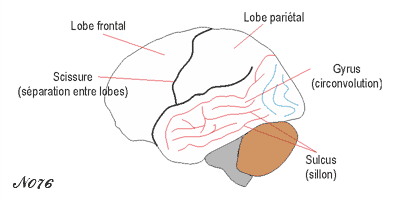 Antonio Damasio : professor of neuroscience, neurology and psychology, he directs the Brain and Creativity Institute at the University of Southern California, Los Angeles.
Antonio Damasio : professor of neuroscience, neurology and psychology, he directs the Brain and Creativity Institute at the University of Southern California, Los Angeles.
He is an adjunct professor at the Salk Institute in La Jolla.
https://fr.wikipedia.org/wiki/Ant%C3%B3nio_Dam%C3%A1sio
Phineas P. Gage :(9 July 1823 - 21 May 1860) was a railway foreman whose personality changed after a major head injury made him a textbook case in neurology.
On 13 September 1848, Phineas Gage was working on the outskirts of Cavendish, Vermont, in the United States, building a railway line1 . While he was stuffing the powder into a rock crevice, Gage forgot to add a layer of sand on top of the black powder. By misfortune, the crowbar hit the rock and set the powder on fire. As a result of the explosion, the 13.25 pound (6.01 kg), 3.58 foot (1.09 m) long, 1.25 inch (3.18 cm) diameter iron rod (most likely a tamping rod) went through his skull, causing extensive damage to the left frontal lobe of his brain.
Phineas Gage, who had previously been regarded as serious, caring, sociable, reliable and judgmental, became unstable and asocial, according to his physician, Dr Harlow (1819-1907). His physical condition remained unchanged, except for the loss of his left eye.
https://fr.wikipedia.org/wiki/Phineas_Gage
Prefrontal cortex : The lateral prefrontal cortex and in particular Brodmann's areas 9 and 46 (dorsolateral) is associated with the development of complex cognitive processes. It plays a role in executive control such as planning and deductive reasoning (changing the set of rules during set-shifting, solving complex problems, retrieving memories in long-term memory, organisational strategies and working memory). The activation of this region during planning tasks such as the Tower of London test has been observed by medical imaging.
The orbitofrontal cortex (areas 12 and 13) is involved in affective and motivational processes i.e. control of the limbic system: inhibition, encoding of the motivational value of a stimulus, decision making and control of reward-based action, mood control, social behaviour14.
The anterior cingulate cortex (areas 24, 25, 32) is involved in self-generation of behaviour15 , control of autonomic functions, initiation of reward, intention, inhibition, conflict or error processing.
Lawrence Kohlberg : (October 25, 1927 in Bronxville - January 19, 1987) was an American psychologist who taught at the University of Chicago and at Harvard. According to a ranking by Haggbloom et al, he is among the 30 most important psychologists of the 20th century.
Basing his work on Jean Piaget's theory of stages of acquisition, he is best known for his research in the field of education2 , reasoning and development, specifically for establishing a scale of moral development.
https://fr.wikipedia.org/wiki/Lawrence_Kohlberg
2 - The moral sense in the course of evolution :
« Umuntu ngumuntu ngabantu » :
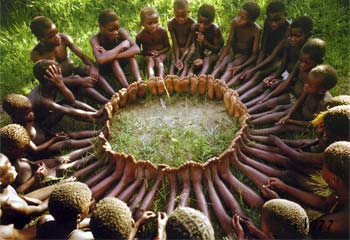
« "Ubuntu" is a humanistic philosophy originating in sub-Saharan Africa. This African worldview, based on otherness, advocates awareness of one's own humanity through the recognition of that of each individual.
Ubuntu, "I am, because you are", came to light thanks to Nelson Mandela because this notion inspired his policy of national reconciliation and also forgiveness after apartheid.
http://theafronomist.com/umuntu-ngumuntu-ngabantu/
https://fr.wikipedia.org/wiki/Ubuntu_(syst%C3%A8me_d'exploitation)#Philosophie_d'Ubuntu
http://monambassade.fr/quest-ce-que-lubuntu-une-forme-de-sagesse-africaine-a-dimension-universelle/
Nelson Rolihlahla Mandela (1918-1999) : was a South African statesman. He was one of the historic leaders in the struggle against the political system of racial segregation (apartheid) before becoming President of the Republic of South Africa from 1994 to 1999, following the first non-segregationist national elections in the country's history.
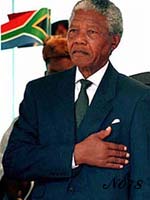
Frans de Waal : born in the Netherlands, he is a psychologist, primatologist and ethologist.

Professor of Primate Ethology in the Department of Psychology at Emory University in Atlanta and Director of the Living Links Center at the Yerkes National Primate Research Center, he has published numerous books, including 'The Politics of the Chimpanzee', 'On Reconciliation in Primates' and 'The Ape in Us'.
His main contribution is the identification of the phenomenon of reconciliation in many primate species after a conflictual interaction. This ability was previously thought to be restricted to the human species. He asks what ultimately makes the difference between humans and bonobos or chimpanzees, whose genes we share 98.7%
He makes the difference between chimpanzee communities, which are brawlers, capable of pernicious coalitions to impose the choice of colony leader, and bonobos, which are pacifists and whose females settle conflicts between males by offering themselves for sex, which bonobos are reputed to be insatiable for.
According to Frans de Waal, hominids have both of these great apes: quarrelsome, but also peace-loving.
https://fr.wikipedia.org/wiki/Frans_de_Waal
Ultimatum game :The ultimatum game is used in experimental economics and is played as follows: a first person (player A) is given a certain amount of money, and has to decide how much to keep for himself and how much to give to a second person (player B). The latter must then decide whether to accept or refuse the offer. If they refuse, neither person receives any money.
The standard model of Homo oeconomicus assumes that individuals pursue individual material interests and act rationally to achieve their goals. In such a scenario, Player B should accept any offer greater than zero from Player A, and Player A, anticipating Player B's response, should make the smallest possible positive offer. Both of these predictions are rarely verified and various researchers, notably behavioural economists, have made extensive use of this game in an attempt to shed light on the role of notions of justice and reciprocity in social interactions. Some researchers have noted, however, the very artificial nature of the experiment, and have hypothesised that over time, a learning process would lead individuals to modify their behaviour.
https://fr.wikipedia.org/wiki/Jeu_de_l%27ultimatum
Mirror neurons and empathy :
The identification of mirror neurons in the 1990s was the work of the team of Giacomo Rizzolatti, Director of the Department of Neuroscience at the Faculty of Medicine in Parma.
They were first observed in the ventral premotor cortex of the rhesus macaque monkey (area F5). However, the view that mirror neurons are the neurobiological basis of empathy is a bit simplistic.
Other studies show that empathy involves the neurophysiological circuits of emotional expression (the somatosensory cortex, insula, cingulate cortex, ventromedial prefrontal cortex and amygdala), but also the autonomic nervous system (which regulates breathing and heart rate, among other things) and the brain's hormonal systems.
Recently, the neuroscientist Nicolas Danziger, from the Pitié-Salpêtrière Hospital, conducted experiments that show that it probably also requires an intense mental work of representation and imagination of "what the other person feels", which goes far beyond a simple automatic mimicry based on mirror neurons.
N. Danziger has shown that people who are insensitive to pain (due to genetic mutations) are very good at assessing the degree of suffering of others based on facial expressions. They do so without necessarily reviving painful sensations that they would have experienced, since they lack them.
https://fr.wikipedia.org/wiki/Neurone_miroir
https://www.pourlascience.fr/sd/neurosciences/lacquisition-de-lempathie-3211.php
https://www.pourlascience.fr/sd/neurosciences/empathie-la-fin-des-neurones-miroirs-10227.php
Ugandan bay colobus :

Different clans : Scientists are able to establish the family links, in particular by genetic analysis using the DNA present in their droppings.
Céphalophe :

Chicken breeding :
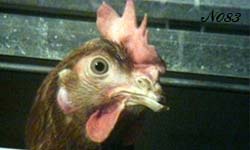
https://blogs.mediapart.fr/joseph-38/blog/160314/18-poules-au-metre-carre
https://www.youtube.com/watch?v=0fEBK21o72I
Poule ébecquée - https://www.ciwf.fr/animaux-delevage/poules-pondeuses/
Funeral wake :
https://www.sciencesetavenir.fr/animaux/grands-mammiferes/video-une-veillee-funeraire-exceptionnelle-chez-des-chimpanzes_103387
Hormones of motherhood and mourning :
Alicia Carter, an ethologist at University College London, puts forward a hypothesis to explain the carrying behaviour of female primates: she takes into account the strength of the mother-infant bond, which is forged in particular through the secretion of a hormone, oxytocin, at birth.
Once this bond is formed, it is difficult to break.
By not breaking this link abruptly, babywearing would allow the stress of loss to be overcome. This is the hypothesis launched in 2019 by Fred Bercovitch's group at Kyoto University (Japan). This stress was measured in 2006 by zoologists from the University of Pennsylvania in the faeces of female baboons who had lost a family member, with high levels of glucocorticoids (hormones associated with stress), which returned to normal after two months. However, Fred Bercovitch observed a rapid return to normal of these glucocorticoid levels in a female Japanese macaque that had carried her child for 20 days. The need to reduce this stress, which is synonymous with unhappiness, could also explain the support that some females receive from their relatives after the loss.
Alicia Carter and Elise Huchard's study showed that the mothers' mates participate in the mourning process in their own way. They ward off the curious, watch the body when the mother moves away, and dolphins feed a mother who devotes her strength to keeping the body of her calf at the surface.
In this way, we can better understand the strength of the ties that can bind people together, and the disruption to health, both physical and mental, when these ties are not respected.
Sc&V 1236 p94-95
The role of pheromones in ant communication :
A postpharyngeal gland is known to exist in workers, which stores substances used for colonial recognition. But there are many other glands that release volatile compounds responsible for various social behaviours. The best known are located in the abdomen: Dufour's gland, poison gland, rectal or pygidial gland... Others are found in the head (mandibular glands and postpharyngeal gland) or in the legs.
https://www.futura-sciences.com/planete/dossiers/zoologie-fourmi-secrets-fourmiliere-1404/page/8/
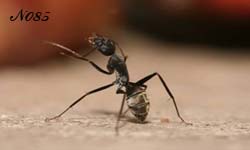
https://lesfourmis2018.wordpress.com/la-pheromone-de-piste/
https://passion-entomologie.fr/embouteillages-chez-les-fourmis/
Volvox aureus : is a species of green algae in the Volvocaceae family. It lives in dioecious colonies of 500 to 1000 cells.
Mitochondrial cells :Mitochondria are usually found inside our cells, where they provide energy. However, for the first time, French researchers have found millions of them, whole and functional, in our blood.
To understand this phenomenon, you need to know that mitochondria were originally bacteria. But some 2 billion years ago they seem to have been taken over by archaea [*], a type of prokaryotic cell that needed their ability to produce energy from oxygen.
Today's nucleated cells are the result of the meeting of two small cells without a nucleus (prokaryotes): a bacterium and an archaea.
This combination gave rise to eukaryotic cells (with a nucleus), including human cells, which normally contain a large number (up to 2000) of these organelles.
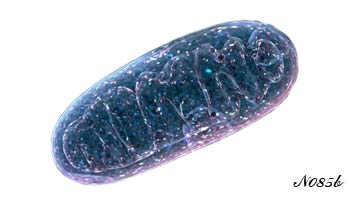
https://www.science-et-vie.com/science-et-culture/3-post-vivants-les-organelles-se-creent-une-vie-apres-la-vie-48237
Patricia Churchland : est une philosophe canadienne et américaine de tradition analytique connue pour ses contributions dans les domaines de philosophie de l'esprit et de neurophilosophie. Elle est professeure émérite à l'Université de Californie à San Diego où elle enseigne depuis 1984. Elle est également professeur adjointe à Salk Institute for Biological Studies depuis 19892. Elle est membre du conseil des fiduciaires du Centre de Moscou pour les études de la conscience (Moscow Center for Consciousness Studies) du département de philosophie de l'Université d'État de Moscou.
https://fr.wikipedia.org/wiki/Patricia_Churchland
Népotism : A political system in which the leader favours family members by giving them powers and positions when they are not competent to fill them.
Synonym: favouritism
Abbé Pierre : Henri Grouès, known as Abbé Pierre (1912 - 2007), was a French Catholic priest, first a Capuchin, then a priest of the diocese of Grenoble (1939).
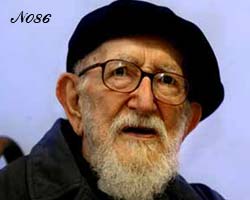
He was a member of the French Resistance, then a member of parliament, before founding the Emmaus movement (a non-denominational organisation fighting against exclusion), which includes the Abbé-Pierre Foundation for the housing of the underprivileged and many other associations, foundations and companies in the social economy in France.
https://fr.wikipedia.org/wiki/Abb%C3%A9_Pierre#Mythe_de_l'abb%C3%A9_Pierre_selon_Roland_Barthes
3 - Is religion at the origin of the moral sense ?
Albert Schweitzer : born on 14 January 1875 in Kaysersberg (Alsace-Lorraine) and died on 4 September 1965 in Lambaréné (Gabon), he was a doctor, philosopher and musician, pastor and Protestant theologian.
The hospital he developed in the equatorial forest on the banks of the Ogooué from 1913 onwards made him known throughout the world. In 1952, the award of the Nobel Peace Prize brought him consecration and considerable media visibility.
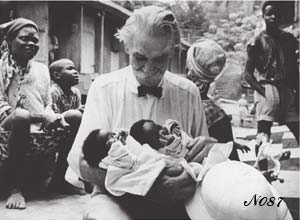
https://fr.wikipedia.org/wiki/Albert_Schweitzer
Cargo cult : The cargo cult is a set of rituals that appeared during the colonisation of Melanesia (Oceania) at the end of the 19th century and in the first half of the 20th century among the Aborigines. These rites consisted of imitating American and Japanese radio operators who ordered supplies distributed by cargo plane. The natives attributed the abundance and sophistication of the goods brought by cargo to divine favour.
https://fr.wikipedia.org/wiki/Culte_du_cargo
https://dailygeekshow.com/culte-du-cargo-indigenes-oceanie-coutumes-colonisation/
Dark Edges : Located in Northern Ireland, this site consists of a 1km road lined with twisted trees. Through their branches, the light creates a strange atmosphere of light and shadow. For this reason, this road was used for the filming of the Game of Thrones series.
https://www.naturephotographie.com/irlande/the-dark-hedges/
Ancestor worship :
Depending on the region and the period, the cult of the ancestors has two different aspects, depending on whether it is addressed to all the ancestors or to a particular hero.
It is linked to an even more widespread cult, that of the dead, and its purpose is to make the deceased the intermediary between the living and the divinity.
While Eastern religions have included the cult of ancestors from the beginning, monotheistic religions such as Judaism, Christianity and Islam do not recognise it.
https://www.universalis.fr/encyclopedie/culte-des-ancetres/
https://fr.wikipedia.org/wiki/Culte_des_anc%C3%AAtres
The Wind Phone : The death of a loved one is most often felt as a heartbreak by relatives. Being able to talk to the dead helps to ease this suffering. In Japan, for example, unconnected telephone booths allow people to talk to their deceased loved ones, although this is not a cult.
https://www.nouvelobs.com/monde/20190614.OBS14387/au-japon-la-cabine-telephonique-ou-l-on-vient-parler-a-ses-morts.htm

Cult of the Supreme Being :In France, in 1794, the cult of the Supreme Being was created on the initiative of Robespierre, who gave meaning to his project in his speech of 18 Floréal Year II (7 May 1794): "The idea of the Supreme Being is a continual reminder of justice, it is therefore social and republican."
Explicit reference to the Supreme Being is made in the preamble to the 1789 Declaration of the Rights of Man and of the Citizen, which is a pillar of the French legal, political and social system:
"The National Assembly recognises and declares, in the presence and under the auspices of the Supreme Being, the following rights of man and the citizen".
https://fr.wikipedia.org/wiki/Culte_de_l%27%C3%8Atre_supr%C3%AAme
Joseph Henrich : A biology researcher, since 2015 he has been head of the Department of Human Evolutionary Biology at Harvard University (USA).
https://www.books.fr/joseph-henrich-culture-nous-rend-intelligents/
Rohingya : The Rohingya are an ethnic group, predominantly Muslim, with a minority of Christians and Hindus. They live mainly in the northern part of Arakan State in western Burma. They are distinct from the Arakanese, who are Buddhists and form the majority of the population in this region.
Considered Bangladeshi, the Rohingya are rejected by a large part of Burma's majority ethnic group (about 70%), the Bama, for whom Burmese identity is inseparable from the Buddhist religion.
https://fr.wikipedia.org/wiki/Rohingya
Abraham : Abraham (« père d'une multitude de nations ») de son premier nom Abram (« le Père est exalté ») est un personnage de la mythologie juive, considéré comme le principal patriarche des religions juive, chrétienne et musulmane. Figure centrale du Livre de la Genèse,il est considéré comme le fondateur du monothéisme.
Moses : According to tradition, he is the first prophet of Judaism. He appears in the Book of Exodus, receiving the tables of the Law.
https://fr.wikipedia.org/wiki/Mo%C3%AFse
Jesus : Jesus Christ is the name given by Christians to Jesus of Nazareth, whom they consider to be the Messiah ("Christos" in ancient Greek), the "anointed one of the Lord" announced by the Old Testament of Judaism, who died and rose for the salvation of mankind. Most Christians recognise Jesus Christ as the only Son of God and as one of the three persons of the triune God.
https://fr.wikipedia.org/wiki/J%C3%A9sus-Christ
Muhammad : was an Arab religious, political and military leader from the Quraysh tribe. According to Islamic tradition, he was born in Mecca around 570 and died in Medina in 632. He was the founder of Islam and is considered its major prophet.
Muslims consider him to be the last of the prophets of monotheism, in the sense that he completes and seals the cycle of the Abrahamic monotheistic revelation. His religious biographies report that he taught his first companions (sahabas) the verses of the Qur'an, which he presented as the very word of God (Allah in Arabic), transmitted to him by the archangel Gabriel.
https://fr.wikipedia.org/wiki/Mahomet
Dogma : Dict. Robert : A point of doctrine established or regarded as a fundamental, unquestionable truth (in a religion or philosophical school).
Karma : Dict. Robert : Central dogma of the Hindu religion according to which all actions and intentions are written into the destiny of living beings.
In these conceptions, each being is responsible for his acts (his karma), and therefore for his exit from the cycle of reincarnations (Samsãra).
https://fr.wikipedia.org/wiki/Karma
Belief : The act of believing something to be true, probable or possible, regardless of the facts, or lack thereof. Beliefs are often certainties without evidence.
https://fr.wikipedia.org/wiki/Croyance
Pareidolia : This phenomenon consists of identifying a familiar shape in a landscape, a cloud, smoke or an ink blot, identifying a human voice in the background noise of an acoustic system, or recognising words in a song whose lyrics one does not understand.
https://fr.wikipedia.org/wiki/Par%C3%A9idolie
https://www.franceculture.fr/sciences/un-bonhomme-de-neige-dans-lespace-10-autres-exemples-de-pareidolie
https://fr.wikipedia.org/wiki/Cydonia_Mensae
False beliefs : Social networks exploit to the fullest extent possible these two flaws in human thinking that impair our critical thinking:
- in humans, information is relayed as soon as it is spectacular,
- and it is recognised as true when it is relayed by the greatest number of people.
Epicureanism : A branch of Western philosophy whose main objective is the attainment of happiness through the satisfaction of only "natural and necessary" desires.
Epicureanism originated in the Garden School, founded in a small garden in Athens by Epicurus in 306 BC.
https://fr.wikipedia.org/wiki/%C3%89picurisme
Stoicism : Stoicism is a school of Hellenistic philosophy founded by Zeno of Kition in early 3rd century BC in Athens.
It is a philosophy of personal ethics according to which happiness is in virtue.
https://fr.wikipedia.org/wiki/Sto%C3%AFcisme
Apoptosis : Apoptosis plays a role in the formation of the body of an organism, for example the emergence of fingers. At the beginning of its formation, the fingers of the hand are all joined together, and then the cells between the future fingers disappear.
Similarly, the disappearance of the caudal appendage in the human foetus and the regression of the tail in tadpoles during their metamorphosis into frogs are also due to apoptosis.
Cancer cells are usually cells in which this mechanism no longer functions.
https://fr.wikipedia.org/wiki/Apoptose
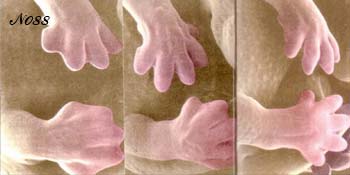
"Cell death sculpts our internal shape," explains Jean Claude Ameisen, professor of immunology at the University of Paris 7 and a specialist in cell death. "It makes the void appear in the full, creating cavities in our hollow organs. But also our sexual identity, by making the outlines of the genitals of the other sex, initially present in each embryo, disappear."
The embryo's brain is not immune to this phenomenon. Within a few days, more than half of the neurons will die: those that have failed to establish a functional connection with their partners, and those that have formed useless connections.
http://planete.gaia.free.fr/animal/homme/mort/mort.c.est.html
Exhaustive : Treating a subject in its entirety, completely, without leaving anything out.
Major religions : The religions or beliefs with the largest number of followers are :
- Christianity: 2.3 billion,
- Islam: 1.8 billion,
- Hinduism: 1.1 billion,
- Buddhism: 510 million,
- Animism: 300 million,
- Shinto: 106 million.
https://atlasocio.com/classements/religions/adherents/classement-religions-croyances-par-nombre-adherents-monde.php
Epiphenomenon : That which is added to a phenomenon without reacting on it.
Accurate and erroneous sources : This biological mechanism, which leads to the deletion of erroneous information from the age of 16 months, and then to the differentiation between true and false information, seems to have disappeared in a significant proportion of today's populations.
Could we deduce from this that personal interests, which develop to the detriment of sensitive perception, cause fans of fake news to regress to the mental age of children under 3 ?
Self-referential thought : That which refers to oneself.
These self-referential areas are particularly active in depressed people who brood over negative thoughts.
https://www.cerveauetpsycho.fr/sd/comportement/la-meditation-de-pleine-conscience-6128.php
4 - Moral sense in the light of science :
David Hume : (1711 - 1776) was a Scottish philosopher, economist and historian. He is considered one of the most important thinkers of the Scottish Enlightenment (along with John Locke, Adam Smith and Thomas Reid) and is one of the greatest philosophers and writers in the English language.
https://fr.wikipedia.org/wiki/David_Hume
Immanuel Kant : (1724 - 1804) was a Prussian philosopher.
His considerable work is centred around the three Critiques: the Critique of Pure Reason, the Critique of Practical Reason and the Critique of the Faculty of Judgment.
https://fr.wikipedia.org/wiki/Emmanuel_Kant
Autonomous car :
The arrival of fully autonomous cars was planned for the year 2020. However, despite advances in artificial intelligence (AI), manufacturers have had to scale back their ambitions, and the vehicles still cannot do without a driver ready to take control.
Also, robotic vehicles are currently only capable of driving on motorways; they are not allowed to drive in more complex environments.
Why the delay?
First of all, several fatal accidents have dampened enthusiasm, forcing engineers to consider the current limits of AI.
For example, if a vehicle is in a lane with a white line, the human will carefully cross the line, whereas the robot cannot transgress the ban.
The random movements of crowds of pedestrians, easily interpreted by a driver, also block the AI on the vehicle.
Climate changes themselves are too varied to allow the AI to adapt to changes.
The random movements of crowds of pedestrians, easily interpreted by a driver, also block the AI on the vehicle.
Climate changes themselves are too varied to allow the AI to adapt to changes.
Sc&V 1216 p51
https://www.science-et-vie.com/technos-et-futur/la-voiture-autonome-ne-tient-pas-encore-la-route-61007?uid=NjU4NTA=
Working memory :
In psychology, the system for temporarily holding information for immediate processing is called working memory.
https://www.universalis.fr/encyclopedie/memoire-de-travail/
Jonathan David Haidt : is an American social psychologist and professor of ethics. His studies focus on morality. He was an assistant professor at the University of Virginia from 1995 to 2011 and later taught at the Stern School of Business at New York University.
https://fr.wikipedia.org/wiki/Jonathan_Haidt
Standard model of Homo œconomicus :
Homo œconomicus, or economic man in Latin, is a theoretical representation of human behaviour: rational, he knows how to analyse and anticipate a situation as well as possible in order to make the most advantageous decisions for himself
Homo œconomicus allows economists to build economic models in order to carry out simulations or evaluations.
https://fr.wikipedia.org/wiki/Homo_%C5%93conomicus
5 – The moral sense of the adult :
Empathy :
A new study, conducted by researchers from the University of Cambridge, Institut Pasteur, Université Paris Diderot, CNRS and the genetics company 23andMe, suggests that our empathy is not only the result of our upbringing and experience, but is also partly influenced by genetic variation. These findings are published in the journal Translational Psychiatry on 12 March 2018..
https://www.cnrs.fr/fr/les-genes-jouent-un-role-dans-lempathie
www2.cnrs.fr/sites/communique/fichier/180312_cp_empathie_fr.pdf
Gilgamesh : is a mythical character from ancient Mesopotamia, son of the goddess Ninsun (goddess of the cattle). He is said to have ruled the city of Uruk around 2650 BC. In Mesopotamian mythology, he is said to have been the god of the underworld. He is the main character of several epic tales, the most famous of which is the Epic of Gilgamesh, which was very popular in high antiquity.
https://fr.wikipedia.org/wiki/Gilgamesh
le Mahabharrata : is a Sanskrit epic of Hindu mythology. It is considered to be the greatest poem ever composed.
https://fr.wikipedia.org/wiki/Mahabharata
Ashoka : was the first ruler to achieve the unity of India. This is why the Indian Republic has made the lions on the 'Ashoka Pillar' its national emblem.
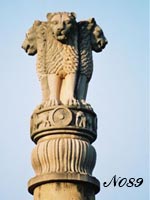
The nucleus accumbens : gives rise to pleasure, whether it comes from food or alcohol, drugs or sex...
If we try to go further in our thinking, the nucleus accumbens would not only be a generator of pleasure: pleasure and well-being being linked to "doing what pleases" to feel better...
The development of prohibitions in large societies, by restricting individual behaviour, is the cause of ill-being for some people. The only way to escape from this is to find pleasure in another area which may become the object of an addiction: addiction to food, drugs, sex...
All these outlets, although they bring pleasure, do not bring well-being: they bring relief from malaise: this relief is perceived as better because it is accompanied by a decrease in body awareness.
Let's take the case of food: under physiological conditions, as soon as one reaches the satiety threshold, eating becomes painful. This is no longer the case if the well-being (the pleasure felt) is provided by the absorption of food: continuing to eat will be indispensable for the relief to persist.
The nucleus accumbens would therefore not bring pleasure, but relief from discomfort..
Migration :
In France, the ANCESTRA project aims to trace the settlement of France today by studying the impact of each wave of migration from the Neolithic to the Merovingian period.
Through the study of ancient DNA, it is possible to access the physical, genetic, health, diet and, consequently, the environmental conditions of these different populations.
With its findings in 2020, this project has highlighted the diversity of the peoples that made up the 'French population'.
https://www.inrap.fr/ancestra-10433
These findings indicate that we are a mixture of at least 3 populations of hunter-gatherers who arrived in several waves over the last 40,000 years, farmers who came from Anatolia 7,000 years ago, and nomads from the Eurasian steppes 4,500 years ago. Not forgetting the local populations of Neanderthals who had already settled on this land 40,000 years ago.
These different peoples can be found throughout Europe in varying proportions.
This history, written deep in our cells, describes what we are today: the descendants of an incredible mix of men and women, each of whom has brought us a part of our current knowledge.
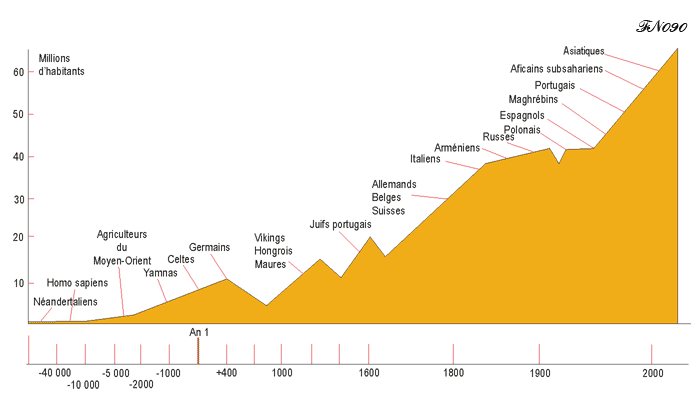
Sc&V 1246 juillet 2021
Les collections de l’Histoire N°88 : « les populations qui ont fait la France »
Skin colour :
Everyone knows, or should know, that skin colour cannot define race. This colour is the result of pigmentation that appears when we are exposed to the sun. This pigmentation varies according to the regions of the world: it increases as one approaches the equator and decreases towards the poles if one does not take into account the migrations that have occurred in the meantime.
It has been imposed on certain peoples over the course of evolution, and its function is to protect them from ultraviolet rays (by penetrating the epidermis, UV rays create lesions on the DNA bases).
What then do we observe in peoples who, whether pigmented or not, have moved to other parts of the world ?
In the Commonwealth area, Africans who have migrated to the UK (a country with little sunlight) have their children more easily affected by rickets. With reduced exposure to the sun, the skin, protected from UV radiation, no longer synthesises the vitamin D that promotes calcium binding in the bones.
In the United States towards the end of the 19th century, rickets was seen in large cities. It was more common in blacks than in whites, especially with the migration of black families from the agricultural south to the industrial north. Moderate rickets in young black children in urban areas was considered normal.
Conversely, light-skinned British people who migrated to Australia, where there is a lot of sunshine, have a higher rate of skin cancer.
Is a racist 'white' person unaware that, as he tans on the beach, he is slowly turning black... Is he changing race ?
https://biologiedelapeau.fr/spip.php?article70
https://fr.wikipedia.org/wiki/Rachitisme
https://www.fdesouche.com/2020/05/10/evelyne-heyer-il-y-a-plein-de-cancer-de-la-peau-chez-les-britanniques-en-australie-et-il-faut-mettre-les-nouveaux-nes-a-peau-foncee-sous-lampe-a-uv-en-france/
https://nos-medias.fr/video/evelyne-heyer-il-y-plein-de-cancer-de-la-peau-chez-les-britanniques-en-australie-et-il-faut
https://www.pourquoidocteur.fr/Articles/Question-d-actu/16727-Cancer-de-la-peau-les-pays-les-plus-touches
https://fr.wikipedia.org/wiki/Couleur_de_la_peau_humaine
https://www.science-et-vie.com/questions-reponses/notre-cerveau-est-il-predispose-au-racisme-54059
https://www.science-et-vie.com/science-et-culture/la-science-peut-elle-se-passer-du-mot-race-44652
Sc &V : https://www.ledevoir.com/culture/medias/598006/edition-bi-science-bi-bi-amp-bi-bi-vie-bi-perd-son-expertise-scientifique
https://fr.wikipedia.org/wiki/Reworld_Media
Muzafer Sherif :
In the field of social psychology, of which he was one of the founders, Muzafer Sherif (1908-1988) studied the causes and mechanisms that create conflict between groups. To do this, he initiated research using groups of children between 11 and 12 years old in a summer camp.
He found that inter-group relations are either competitive or cooperative. When two groups find themselves in a situation of competition for scarce or valued resources (material goods or territories), these groups find themselves in a relationship marked by conflict and discrimination.
According to Sherif, environmental conditions and needs determine whether the nature of relations between social groups is competitive or cooperative.
https://fr.wikipedia.org/wiki/Th%C3%A9orie_de_l%27identit%C3%A9_sociale
http://theses.univ-lyon2.fr/documents/getpart.php?id=lyon2.2009.jumageldinov_a&part=165861
Barter and money :
The history of money begins with trade and transactions, and cannot be reduced to the coin or the paper medium. It is an essential condition for economic activity. Thus, objects that were easy to store and had an exchange value were initially used as money.
These were goods that could be used directly, such as salt, which was used to pay Roman legionaries and which is the origin of the word "salary". In the 14th century, the cocoa bean was a medium of exchange throughout Central America.
It could also be symbolic objects such as shells (cowrie shells in some parts of Africa)...
The cowrie shell or porcelain money (Monetaria moneta or Cypraea moneta) is a very well known shell and was already used in prehistoric times. Used as currency in a large part of Africa and the Indian Ocean, this shell was spread by Arab and European sailors as early as the 10th century.
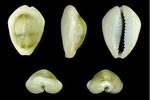
The cowrie shells were gathered and then counted on ropes or in bags. Thus, 40 cowrie shells corresponded to one rope, 50 ropes (2000 cowrie shells) were worth one head and 10 heads (20,000 cowrie shells) were equal to one bag.

However, the use of gold and silver as a medium of exchange has been documented for much longer (4000 BC).
Metal coins came later. First in Anatolia (now Turkey) around 650 BC. Then in ancient Greece. The Romans extended the use of coins to their entire empire.
Some sources attribute to Gyges, king of Lydia, the introduction of a metallic currency based on electrum (an alloy of gold and silver found naturally in the region).
The first truly international currency appeared in 1750: Empress Maria Theresa of Habsburg created the thaler in her effigy, a currency quickly adopted by the Spanish and English colonies in America.
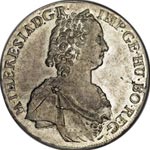
https://fr.wikipedia.org/wiki/Monetaria_moneta
Rhetoric : Définition : Dictionnaaire Le Robert
A set of procedures constituting the art of good speech, of eloquence.
The deployment of eloquence, of oratory means, to persuade; emphatic and declamatory style.
Meta-analysis :
This term refers to the grouping of several independent studies on a given problem. As the number of cases studied increases, it is possible to draw more general conclusions.
https://www.vulgaris-medical.com/encyclopedie-medicale/meta-analyse
https://fr.wikipedia.org/wiki/M%C3%A9ta-analyse
Compassion :
Compassion is a feeling whereby an individual who feels the suffering of others is moved to do something about it.
https://fr.wikipedia.org/wiki/Compassion
Pleasure : Définition : Le Robert :
A pleasant sensation or emotion, connected with the satisfaction of a desire, a material or mental need.
What pleases someone to do, to order. What he considers good, what he wants.
Formula of the old edicts which marked the will of the king.
Desire : (Le Littré) Desire to obtain, to have something.
Insula and interoceptive consciousness :
The right anterior insula is involved in body awareness (or interoceptive awareness). There is a correlation between the volume of this area and the accuracy of body awareness.
The insular cortex is also involved in assessing the intensity of pain, whether felt or imagined.
https://fr.wikipedia.org/wiki/Cortex_insulaire
Ventral striatum :
Researchers at the Pitié-Salpêtrière Neuroscience Research Centre (Mathias Pessiglione's team, Inserm) sought to find out whether mental and physical efforts are driven by a common motivational centre or whether they are driven by separate parts of the brain.
To do this, the researchers subjected 20 volunteer participants to tasks combining mental and physical effort, while monitoring the brain work by fMRI.
The researchers were able to identify a general motivational system in the brain, in the area of the ventral striatum, which is capable of activating any type of effort, whether mental or physical.
« The ventral striatum could switch connections according to demand. It would amplify neuronal activity in the caudate nucleus for a cognitive operation, and in the putamen for a physical action. »
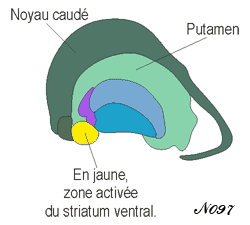
6 - Education - developing moral sense :
Remuneration of adult subjects : The subjects in the study could receive the equivalent of one day's, two weeks' or five months' pay.
Edward L. Deci : Professor of Psychology and Social Sciences at the University of Rochester and Director of the Human Motivation Program. Known for his work on theories of intrinsic motivation and self-determination theory, he has influenced motivational management theory.
https://www.wikiberal.org/wiki/Edward_L._Deci
Money and the loss of empathy :Armin Falk, professor of economics (University of Bonn), conducted a study with 124 participants to assess the influence of money on their capacity for empathy.
They were given the choice between earning €10 and killing a mouse, or earning nothing and letting it live. 45% of them preferred the money.
In other situations where mice were the object of a commercial transaction, more than 70% of the participants opted for the sacrifice of the animals..
Theory of mind :
Theory of mind refers to the ability in cognitive science to attribute unobservable mental states (e.g. intention, desire, belief1......) to oneself or to other individuals. The affective or cognitive states of others are then inferred on the basis of their emotional expressions, attitudes or assumed knowledge of reality.
This ability plays a key role in social interactions - communication, empathy, collaboration, teaching, competition etc.
https://fr.wikipedia.org/wiki/Th%C3%A9orie_de_l%27esprit
Jonathan Haidt :(born 1963 in New York) is an American social psychologist and professor of ethics. His studies focus on morality.
He was an assistant professor at the University of Virginia from 1995 to 2011 and later taught at the Stern School of Business at New York University.
https://fr.wikipedia.org/wiki/Jonathan_Haidt
Amoral : foreign to morality (Dic. Robert).
Immoral : violating the principles of established morality (Dic. Robert).
Law of Talion : 'Talion' comes from the Latin 'talis' which means 'such' or 'like'.
The "Law of Talion" is described in 1730 BC in the code of Hammurabi, then king of Babylon (1792 and 1750 BC). This law encouraged individual revenge, provided that the punishment was identical to the crime committed. Thus, if a man had his hand cut off, the Law of Talion allowed him to do the same to his enemy. Previously, there was nothing to indicate that the revenge had to be equal to the harm suffered, it could be much greater. "An eye for an eye, a tooth for a tooth' means that you want to exact revenge on someone equal to what they have done to you.
These prescriptions are found in the Old Testament :
Exodus 21.22
If people are fighting and hit a pregnant woman and she gives birth prematurely but there is no serious injury, the offender must be fined whatever the woman’s husband demands and the court allows.
Exodus 21.23
But if there is serious injury, you are to take life for life,
Exodus 21.24
eye for eye, tooth for tooth, hand for hand, foot for foot,
Exodus 21.25
burn for burn, wound for wound, bruise for bruise.
Leviticus 24.17
Anyone who takes the life of a human being is to be put to death.
Leviticus 24.18
Anyone who takes the life of someone’s animal must make restitution—life for life.
Leviticus 24.19
Anyone who injures their neighbor is to be injured in the same manner :
Leviticus 24.20
fracture for fracture, eye for eye, tooth for tooth. The one who has inflicted the injury must suffer the same injury.
Deuteronomy 19:21
Show no pity : life for life, eye for eye, tooth for tooth, hand for hand, foot for foot.
Contrary to appearances, the commandment "An eye for an eye, a tooth for a tooth", is not an incentive or a right to exact revenge, but a limitation of the right to reparation of damages.
This system of applying penalties limited to what has been suffered has prevented people from taking justice into their own hands, with the possibility of escalating responses.
The New Testament, on the other hand, takes a new look at this notion of punishment equivalent to the harm suffered.
The emphasis is on overcoming oneself.
Matthew 5 38 You have heard that it was said, ‘Eye for eye, and tooth for tooth'.
Matthew 5 39 But I tell you, do not resist an evil person. If anyone slaps you on the right cheek, turn to them the other cheek also.
Matthew 5 40 And if anyone wants to sue you and take your shirt, hand over your coat as well.
Matthew 5 41 If anyone forces you to go one mile, go with them two miles
Matthew 5 42 Give to the one who asks you, and do not turn away from the one who wants to borrow from you.
Matthew 5 43 You have heard that it was said, ‘Love your neighbor and hate your enemy.’
Matthew 5 44 But I tell you, love your enemies and pray for those who persecute you,
This message of tolerance is found in the Koran.
Koran 42/43 As-shoura : « And he who endures and forgives, this indeed is part of the good disposition and resolution in affairs ».
https://www.expressio.fr/expressions/oeil-pour-oeil-dent-pour-dent-loi-du-talion
http://www.linternaute.com/expression/langue-francaise/231/il-pour-oeil-dent-pour-dent/
https://www.bible-ouverte.ch/faq/faq-theme/qr-societe-politique-famille-ethique/510-reponse-135.html
Collaboration : Collaboration in adults is seen differently: while the head of state needs the citizen to reach the pinnacle of power, he may consider his work to be of greater value than that of his elector, even if the latter works much harder to feed him or provide him with the means to exercise his power. The same is true for the entrepreneur, or for the man compared to the woman.
Thus the scale of remuneration can reach a ratio of 1 to 2000.
In 2017, according to the British non-governmental organisation, Oxfam (Oxford Committee for Famine Relief), 82% of the world's wealth was held by the world's richest people, who make up just 1% of the population.
"Over the past ten years, ordinary working men and women have seen their incomes rise by an average of 2% a year, while the wealth of billionaires has increased by 13% a year, almost six times as fast," according to Oxfam. According to the study, it is women who are most affected by global inequality. Women workers are "at the very bottom of the pyramid": they earn less than men and generally have more precarious forms of work, Oxfam says.
Valence : The power of attraction (positive valence) or repulsion (negative valence) that an individual feels towards an object or situation. Valence and satisfaction value are closely related. A food will have a positive valence for a person who is hungry (Sill.1965).
Centration : Larousse dictionary :
Centration effect, overestimation of the stimulus or the part of the stimulus on which attention is focused.
Law of relative centrations, law stated by J. Piaget to account for the probability of perceptual deformations of a figure due to the effect of centration, according to the objective variations of the figure.
Textual and lexical resources (cntrl) :
Centration effect, overestimation of the stimulus or the part of the stimulus on which attention is focused.
Centration is the characteristic of preoperative thinking that causes the child to perceive only one aspect of a situation to the detriment of others.
Anna Freud : born on 3 December 1895 in Vienna and died on 9 October 1982 in London, was a psychoanalyst, born in Austria, exiled to England in 1938, and naturalised in Britain. She was the daughter of the psychoanalyst Sigmund Freud.
Masochism : the attitude of a person who seeks or delights in suffering or humiliation.
In this case, altruism requiring an effort, even a sacrifice of one's life for the other, would be motivated by a masochistic tendency.
C. Daniel Batson : born March 15, 1943, is an American social psychologist. He holds two doctorates, in theology (from Princeton Theological Seminary) and in psychology (from Princeton University's Department of Psychology). He is now Professor Emeritus in the Department of Psychology at the University of Tennessee and is known for his contributions in three areas: the social psychology of altruism, empathic concern and the psychology of religion.
https://en.wikipedia.org/wiki/Daniel_Batson
Robert B. Cialdini : born April 27, 1945, is an American social psychologist. He is known for his book on influence and marketing: Influence, the Psychology of Persuasion, published in France under the title Influence et manipulation.
https://fr.wikipedia.org/wiki/Robert_Cialdini
Immutable theory : « A theory that is not refutable by any conceivable event is devoid of scientific character. For theories, irrefutability is not (as is often imagined) a virtue but a defect. » Karl Popper
Example of irrefutable statements:
- Altruism requires effort and often suffering, so all altruism is a form of masochism.
- Altruism generates rewards or social recognition, so all altruism is a form of selfishness.
Sulcus : the groove between the brain's convolutions.
Scissure : separation between two lobes of the brain.
Gyrus : cerebral circumvolution.

He is an adjunct professor at the Salk Institute in La Jolla.
https://fr.wikipedia.org/wiki/Ant%C3%B3nio_Dam%C3%A1sio
Phineas P. Gage :(9 July 1823 - 21 May 1860) was a railway foreman whose personality changed after a major head injury made him a textbook case in neurology.
On 13 September 1848, Phineas Gage was working on the outskirts of Cavendish, Vermont, in the United States, building a railway line1 . While he was stuffing the powder into a rock crevice, Gage forgot to add a layer of sand on top of the black powder. By misfortune, the crowbar hit the rock and set the powder on fire. As a result of the explosion, the 13.25 pound (6.01 kg), 3.58 foot (1.09 m) long, 1.25 inch (3.18 cm) diameter iron rod (most likely a tamping rod) went through his skull, causing extensive damage to the left frontal lobe of his brain.
Phineas Gage, who had previously been regarded as serious, caring, sociable, reliable and judgmental, became unstable and asocial, according to his physician, Dr Harlow (1819-1907). His physical condition remained unchanged, except for the loss of his left eye.
https://fr.wikipedia.org/wiki/Phineas_Gage
Prefrontal cortex : The lateral prefrontal cortex and in particular Brodmann's areas 9 and 46 (dorsolateral) is associated with the development of complex cognitive processes. It plays a role in executive control such as planning and deductive reasoning (changing the set of rules during set-shifting, solving complex problems, retrieving memories in long-term memory, organisational strategies and working memory). The activation of this region during planning tasks such as the Tower of London test has been observed by medical imaging.
The orbitofrontal cortex (areas 12 and 13) is involved in affective and motivational processes i.e. control of the limbic system: inhibition, encoding of the motivational value of a stimulus, decision making and control of reward-based action, mood control, social behaviour14.
The anterior cingulate cortex (areas 24, 25, 32) is involved in self-generation of behaviour15 , control of autonomic functions, initiation of reward, intention, inhibition, conflict or error processing.
Lawrence Kohlberg : (October 25, 1927 in Bronxville - January 19, 1987) was an American psychologist who taught at the University of Chicago and at Harvard. According to a ranking by Haggbloom et al, he is among the 30 most important psychologists of the 20th century.
Basing his work on Jean Piaget's theory of stages of acquisition, he is best known for his research in the field of education2 , reasoning and development, specifically for establishing a scale of moral development.
https://fr.wikipedia.org/wiki/Lawrence_Kohlberg
2 - The moral sense in the course of evolution :
« Umuntu ngumuntu ngabantu » :

"I am what I am because of what we all are"
« "Ubuntu" is a humanistic philosophy originating in sub-Saharan Africa. This African worldview, based on otherness, advocates awareness of one's own humanity through the recognition of that of each individual.
Ubuntu, "I am, because you are", came to light thanks to Nelson Mandela because this notion inspired his policy of national reconciliation and also forgiveness after apartheid.
http://theafronomist.com/umuntu-ngumuntu-ngabantu/
https://fr.wikipedia.org/wiki/Ubuntu_(syst%C3%A8me_d'exploitation)#Philosophie_d'Ubuntu
http://monambassade.fr/quest-ce-que-lubuntu-une-forme-de-sagesse-africaine-a-dimension-universelle/
Nelson Rolihlahla Mandela (1918-1999) : was a South African statesman. He was one of the historic leaders in the struggle against the political system of racial segregation (apartheid) before becoming President of the Republic of South Africa from 1994 to 1999, following the first non-segregationist national elections in the country's history.

Frans de Waal : born in the Netherlands, he is a psychologist, primatologist and ethologist.

Professor of Primate Ethology in the Department of Psychology at Emory University in Atlanta and Director of the Living Links Center at the Yerkes National Primate Research Center, he has published numerous books, including 'The Politics of the Chimpanzee', 'On Reconciliation in Primates' and 'The Ape in Us'.
His main contribution is the identification of the phenomenon of reconciliation in many primate species after a conflictual interaction. This ability was previously thought to be restricted to the human species. He asks what ultimately makes the difference between humans and bonobos or chimpanzees, whose genes we share 98.7%
He makes the difference between chimpanzee communities, which are brawlers, capable of pernicious coalitions to impose the choice of colony leader, and bonobos, which are pacifists and whose females settle conflicts between males by offering themselves for sex, which bonobos are reputed to be insatiable for.
According to Frans de Waal, hominids have both of these great apes: quarrelsome, but also peace-loving.
https://fr.wikipedia.org/wiki/Frans_de_Waal
Ultimatum game :The ultimatum game is used in experimental economics and is played as follows: a first person (player A) is given a certain amount of money, and has to decide how much to keep for himself and how much to give to a second person (player B). The latter must then decide whether to accept or refuse the offer. If they refuse, neither person receives any money.
The standard model of Homo oeconomicus assumes that individuals pursue individual material interests and act rationally to achieve their goals. In such a scenario, Player B should accept any offer greater than zero from Player A, and Player A, anticipating Player B's response, should make the smallest possible positive offer. Both of these predictions are rarely verified and various researchers, notably behavioural economists, have made extensive use of this game in an attempt to shed light on the role of notions of justice and reciprocity in social interactions. Some researchers have noted, however, the very artificial nature of the experiment, and have hypothesised that over time, a learning process would lead individuals to modify their behaviour.
https://fr.wikipedia.org/wiki/Jeu_de_l%27ultimatum
Mirror neurons and empathy :
The identification of mirror neurons in the 1990s was the work of the team of Giacomo Rizzolatti, Director of the Department of Neuroscience at the Faculty of Medicine in Parma.
They were first observed in the ventral premotor cortex of the rhesus macaque monkey (area F5). However, the view that mirror neurons are the neurobiological basis of empathy is a bit simplistic.
Other studies show that empathy involves the neurophysiological circuits of emotional expression (the somatosensory cortex, insula, cingulate cortex, ventromedial prefrontal cortex and amygdala), but also the autonomic nervous system (which regulates breathing and heart rate, among other things) and the brain's hormonal systems.
Recently, the neuroscientist Nicolas Danziger, from the Pitié-Salpêtrière Hospital, conducted experiments that show that it probably also requires an intense mental work of representation and imagination of "what the other person feels", which goes far beyond a simple automatic mimicry based on mirror neurons.
N. Danziger has shown that people who are insensitive to pain (due to genetic mutations) are very good at assessing the degree of suffering of others based on facial expressions. They do so without necessarily reviving painful sensations that they would have experienced, since they lack them.
https://fr.wikipedia.org/wiki/Neurone_miroir
https://www.pourlascience.fr/sd/neurosciences/lacquisition-de-lempathie-3211.php
https://www.pourlascience.fr/sd/neurosciences/empathie-la-fin-des-neurones-miroirs-10227.php
Ugandan bay colobus :

Different clans : Scientists are able to establish the family links, in particular by genetic analysis using the DNA present in their droppings.
Céphalophe :

Chicken breeding :

https://blogs.mediapart.fr/joseph-38/blog/160314/18-poules-au-metre-carre
https://www.youtube.com/watch?v=0fEBK21o72I
Poule ébecquée - https://www.ciwf.fr/animaux-delevage/poules-pondeuses/
Funeral wake :
https://www.sciencesetavenir.fr/animaux/grands-mammiferes/video-une-veillee-funeraire-exceptionnelle-chez-des-chimpanzes_103387
Hormones of motherhood and mourning :
Alicia Carter, an ethologist at University College London, puts forward a hypothesis to explain the carrying behaviour of female primates: she takes into account the strength of the mother-infant bond, which is forged in particular through the secretion of a hormone, oxytocin, at birth.
Once this bond is formed, it is difficult to break.
By not breaking this link abruptly, babywearing would allow the stress of loss to be overcome. This is the hypothesis launched in 2019 by Fred Bercovitch's group at Kyoto University (Japan). This stress was measured in 2006 by zoologists from the University of Pennsylvania in the faeces of female baboons who had lost a family member, with high levels of glucocorticoids (hormones associated with stress), which returned to normal after two months. However, Fred Bercovitch observed a rapid return to normal of these glucocorticoid levels in a female Japanese macaque that had carried her child for 20 days. The need to reduce this stress, which is synonymous with unhappiness, could also explain the support that some females receive from their relatives after the loss.
Alicia Carter and Elise Huchard's study showed that the mothers' mates participate in the mourning process in their own way. They ward off the curious, watch the body when the mother moves away, and dolphins feed a mother who devotes her strength to keeping the body of her calf at the surface.
In this way, we can better understand the strength of the ties that can bind people together, and the disruption to health, both physical and mental, when these ties are not respected.
Sc&V 1236 p94-95
The role of pheromones in ant communication :
A postpharyngeal gland is known to exist in workers, which stores substances used for colonial recognition. But there are many other glands that release volatile compounds responsible for various social behaviours. The best known are located in the abdomen: Dufour's gland, poison gland, rectal or pygidial gland... Others are found in the head (mandibular glands and postpharyngeal gland) or in the legs.
https://www.futura-sciences.com/planete/dossiers/zoologie-fourmi-secrets-fourmiliere-1404/page/8/

Red ant depositing a trail pheromone.
https://lesfourmis2018.wordpress.com/la-pheromone-de-piste/
https://passion-entomologie.fr/embouteillages-chez-les-fourmis/
Volvox aureus : is a species of green algae in the Volvocaceae family. It lives in dioecious colonies of 500 to 1000 cells.
Mitochondrial cells :Mitochondria are usually found inside our cells, where they provide energy. However, for the first time, French researchers have found millions of them, whole and functional, in our blood.
To understand this phenomenon, you need to know that mitochondria were originally bacteria. But some 2 billion years ago they seem to have been taken over by archaea [*], a type of prokaryotic cell that needed their ability to produce energy from oxygen.
Today's nucleated cells are the result of the meeting of two small cells without a nucleus (prokaryotes): a bacterium and an archaea.
This combination gave rise to eukaryotic cells (with a nucleus), including human cells, which normally contain a large number (up to 2000) of these organelles.

Mitochondria are ancient bacteria housed in our cells.
[*] Archaea, (from the ancient Greek ἀρχαῖος, "original, primitive"), formerly known as archaea, are single-celled prokaryotic microorganisms, i.e. living beings consisting of a single cell that does not include a nucleus or organelles.https://www.sciencesetavenir.fr/sante/nombreux-et-invisibles-ces-composants-du-sang-n-avaient-jamais-ete-observes_140700
https://www.science-et-vie.com/science-et-culture/3-post-vivants-les-organelles-se-creent-une-vie-apres-la-vie-48237
Patricia Churchland : est une philosophe canadienne et américaine de tradition analytique connue pour ses contributions dans les domaines de philosophie de l'esprit et de neurophilosophie. Elle est professeure émérite à l'Université de Californie à San Diego où elle enseigne depuis 1984. Elle est également professeur adjointe à Salk Institute for Biological Studies depuis 19892. Elle est membre du conseil des fiduciaires du Centre de Moscou pour les études de la conscience (Moscow Center for Consciousness Studies) du département de philosophie de l'Université d'État de Moscou.
https://fr.wikipedia.org/wiki/Patricia_Churchland
Népotism : A political system in which the leader favours family members by giving them powers and positions when they are not competent to fill them.
Synonym: favouritism
Abbé Pierre : Henri Grouès, known as Abbé Pierre (1912 - 2007), was a French Catholic priest, first a Capuchin, then a priest of the diocese of Grenoble (1939).

He was a member of the French Resistance, then a member of parliament, before founding the Emmaus movement (a non-denominational organisation fighting against exclusion), which includes the Abbé-Pierre Foundation for the housing of the underprivileged and many other associations, foundations and companies in the social economy in France.
https://fr.wikipedia.org/wiki/Abb%C3%A9_Pierre#Mythe_de_l'abb%C3%A9_Pierre_selon_Roland_Barthes
3 - Is religion at the origin of the moral sense ?
Albert Schweitzer : born on 14 January 1875 in Kaysersberg (Alsace-Lorraine) and died on 4 September 1965 in Lambaréné (Gabon), he was a doctor, philosopher and musician, pastor and Protestant theologian.
The hospital he developed in the equatorial forest on the banks of the Ogooué from 1913 onwards made him known throughout the world. In 1952, the award of the Nobel Peace Prize brought him consecration and considerable media visibility.

Dr Albert Schweitzer - Lambaréné Hospital - Gabon.
https://fr.wikipedia.org/wiki/Albert_Schweitzer
Cargo cult : The cargo cult is a set of rituals that appeared during the colonisation of Melanesia (Oceania) at the end of the 19th century and in the first half of the 20th century among the Aborigines. These rites consisted of imitating American and Japanese radio operators who ordered supplies distributed by cargo plane. The natives attributed the abundance and sophistication of the goods brought by cargo to divine favour.
https://fr.wikipedia.org/wiki/Culte_du_cargo
https://dailygeekshow.com/culte-du-cargo-indigenes-oceanie-coutumes-colonisation/
Dark Edges : Located in Northern Ireland, this site consists of a 1km road lined with twisted trees. Through their branches, the light creates a strange atmosphere of light and shadow. For this reason, this road was used for the filming of the Game of Thrones series.
https://www.naturephotographie.com/irlande/the-dark-hedges/
Ancestor worship :
Depending on the region and the period, the cult of the ancestors has two different aspects, depending on whether it is addressed to all the ancestors or to a particular hero.
It is linked to an even more widespread cult, that of the dead, and its purpose is to make the deceased the intermediary between the living and the divinity.
While Eastern religions have included the cult of ancestors from the beginning, monotheistic religions such as Judaism, Christianity and Islam do not recognise it.
https://www.universalis.fr/encyclopedie/culte-des-ancetres/
https://fr.wikipedia.org/wiki/Culte_des_anc%C3%AAtres
The Wind Phone : The death of a loved one is most often felt as a heartbreak by relatives. Being able to talk to the dead helps to ease this suffering. In Japan, for example, unconnected telephone booths allow people to talk to their deceased loved ones, although this is not a cult.
https://www.nouvelobs.com/monde/20190614.OBS14387/au-japon-la-cabine-telephonique-ou-l-on-vient-parler-a-ses-morts.htm

In Japan, the "wind telephone" attracts thousands of people
who sometimes come from far away to converse with their deceased. (AlexMcBride)
who sometimes come from far away to converse with their deceased. (AlexMcBride)
Cult of the Supreme Being :In France, in 1794, the cult of the Supreme Being was created on the initiative of Robespierre, who gave meaning to his project in his speech of 18 Floréal Year II (7 May 1794): "The idea of the Supreme Being is a continual reminder of justice, it is therefore social and republican."
Explicit reference to the Supreme Being is made in the preamble to the 1789 Declaration of the Rights of Man and of the Citizen, which is a pillar of the French legal, political and social system:
"The National Assembly recognises and declares, in the presence and under the auspices of the Supreme Being, the following rights of man and the citizen".
https://fr.wikipedia.org/wiki/Culte_de_l%27%C3%8Atre_supr%C3%AAme
Joseph Henrich : A biology researcher, since 2015 he has been head of the Department of Human Evolutionary Biology at Harvard University (USA).
https://www.books.fr/joseph-henrich-culture-nous-rend-intelligents/
Rohingya : The Rohingya are an ethnic group, predominantly Muslim, with a minority of Christians and Hindus. They live mainly in the northern part of Arakan State in western Burma. They are distinct from the Arakanese, who are Buddhists and form the majority of the population in this region.
Considered Bangladeshi, the Rohingya are rejected by a large part of Burma's majority ethnic group (about 70%), the Bama, for whom Burmese identity is inseparable from the Buddhist religion.
https://fr.wikipedia.org/wiki/Rohingya
Abraham : Abraham (« père d'une multitude de nations ») de son premier nom Abram (« le Père est exalté ») est un personnage de la mythologie juive, considéré comme le principal patriarche des religions juive, chrétienne et musulmane. Figure centrale du Livre de la Genèse,il est considéré comme le fondateur du monothéisme.
Moses : According to tradition, he is the first prophet of Judaism. He appears in the Book of Exodus, receiving the tables of the Law.
https://fr.wikipedia.org/wiki/Mo%C3%AFse
Jesus : Jesus Christ is the name given by Christians to Jesus of Nazareth, whom they consider to be the Messiah ("Christos" in ancient Greek), the "anointed one of the Lord" announced by the Old Testament of Judaism, who died and rose for the salvation of mankind. Most Christians recognise Jesus Christ as the only Son of God and as one of the three persons of the triune God.
https://fr.wikipedia.org/wiki/J%C3%A9sus-Christ
Muhammad : was an Arab religious, political and military leader from the Quraysh tribe. According to Islamic tradition, he was born in Mecca around 570 and died in Medina in 632. He was the founder of Islam and is considered its major prophet.
Muslims consider him to be the last of the prophets of monotheism, in the sense that he completes and seals the cycle of the Abrahamic monotheistic revelation. His religious biographies report that he taught his first companions (sahabas) the verses of the Qur'an, which he presented as the very word of God (Allah in Arabic), transmitted to him by the archangel Gabriel.
https://fr.wikipedia.org/wiki/Mahomet
Dogma : Dict. Robert : A point of doctrine established or regarded as a fundamental, unquestionable truth (in a religion or philosophical school).
Karma : Dict. Robert : Central dogma of the Hindu religion according to which all actions and intentions are written into the destiny of living beings.
In these conceptions, each being is responsible for his acts (his karma), and therefore for his exit from the cycle of reincarnations (Samsãra).
https://fr.wikipedia.org/wiki/Karma
Belief : The act of believing something to be true, probable or possible, regardless of the facts, or lack thereof. Beliefs are often certainties without evidence.
https://fr.wikipedia.org/wiki/Croyance
Pareidolia : This phenomenon consists of identifying a familiar shape in a landscape, a cloud, smoke or an ink blot, identifying a human voice in the background noise of an acoustic system, or recognising words in a song whose lyrics one does not understand.
https://fr.wikipedia.org/wiki/Par%C3%A9idolie
https://www.franceculture.fr/sciences/un-bonhomme-de-neige-dans-lespace-10-autres-exemples-de-pareidolie
https://fr.wikipedia.org/wiki/Cydonia_Mensae
False beliefs : Social networks exploit to the fullest extent possible these two flaws in human thinking that impair our critical thinking:
- in humans, information is relayed as soon as it is spectacular,
- and it is recognised as true when it is relayed by the greatest number of people.
Epicureanism : A branch of Western philosophy whose main objective is the attainment of happiness through the satisfaction of only "natural and necessary" desires.
Epicureanism originated in the Garden School, founded in a small garden in Athens by Epicurus in 306 BC.
https://fr.wikipedia.org/wiki/%C3%89picurisme
Stoicism : Stoicism is a school of Hellenistic philosophy founded by Zeno of Kition in early 3rd century BC in Athens.
It is a philosophy of personal ethics according to which happiness is in virtue.
https://fr.wikipedia.org/wiki/Sto%C3%AFcisme
Apoptosis : Apoptosis plays a role in the formation of the body of an organism, for example the emergence of fingers. At the beginning of its formation, the fingers of the hand are all joined together, and then the cells between the future fingers disappear.
Similarly, the disappearance of the caudal appendage in the human foetus and the regression of the tail in tadpoles during their metamorphosis into frogs are also due to apoptosis.
Cancer cells are usually cells in which this mechanism no longer functions.
https://fr.wikipedia.org/wiki/Apoptose

From left to right, progressive separation of the fetal fingers.
"Cell death sculpts our internal shape," explains Jean Claude Ameisen, professor of immunology at the University of Paris 7 and a specialist in cell death. "It makes the void appear in the full, creating cavities in our hollow organs. But also our sexual identity, by making the outlines of the genitals of the other sex, initially present in each embryo, disappear."
The embryo's brain is not immune to this phenomenon. Within a few days, more than half of the neurons will die: those that have failed to establish a functional connection with their partners, and those that have formed useless connections.
http://planete.gaia.free.fr/animal/homme/mort/mort.c.est.html
Exhaustive : Treating a subject in its entirety, completely, without leaving anything out.
Major religions : The religions or beliefs with the largest number of followers are :
- Christianity: 2.3 billion,
- Islam: 1.8 billion,
- Hinduism: 1.1 billion,
- Buddhism: 510 million,
- Animism: 300 million,
- Shinto: 106 million.
https://atlasocio.com/classements/religions/adherents/classement-religions-croyances-par-nombre-adherents-monde.php
Epiphenomenon : That which is added to a phenomenon without reacting on it.
Accurate and erroneous sources : This biological mechanism, which leads to the deletion of erroneous information from the age of 16 months, and then to the differentiation between true and false information, seems to have disappeared in a significant proportion of today's populations.
Could we deduce from this that personal interests, which develop to the detriment of sensitive perception, cause fans of fake news to regress to the mental age of children under 3 ?
Self-referential thought : That which refers to oneself.
These self-referential areas are particularly active in depressed people who brood over negative thoughts.
https://www.cerveauetpsycho.fr/sd/comportement/la-meditation-de-pleine-conscience-6128.php
4 - Moral sense in the light of science :
David Hume : (1711 - 1776) was a Scottish philosopher, economist and historian. He is considered one of the most important thinkers of the Scottish Enlightenment (along with John Locke, Adam Smith and Thomas Reid) and is one of the greatest philosophers and writers in the English language.
https://fr.wikipedia.org/wiki/David_Hume
Immanuel Kant : (1724 - 1804) was a Prussian philosopher.
His considerable work is centred around the three Critiques: the Critique of Pure Reason, the Critique of Practical Reason and the Critique of the Faculty of Judgment.
https://fr.wikipedia.org/wiki/Emmanuel_Kant
Autonomous car :
The arrival of fully autonomous cars was planned for the year 2020. However, despite advances in artificial intelligence (AI), manufacturers have had to scale back their ambitions, and the vehicles still cannot do without a driver ready to take control.
Also, robotic vehicles are currently only capable of driving on motorways; they are not allowed to drive in more complex environments.
Why the delay?
First of all, several fatal accidents have dampened enthusiasm, forcing engineers to consider the current limits of AI.
For example, if a vehicle is in a lane with a white line, the human will carefully cross the line, whereas the robot cannot transgress the ban.
The random movements of crowds of pedestrians, easily interpreted by a driver, also block the AI on the vehicle.
Climate changes themselves are too varied to allow the AI to adapt to changes.
The random movements of crowds of pedestrians, easily interpreted by a driver, also block the AI on the vehicle.
Climate changes themselves are too varied to allow the AI to adapt to changes.
Sc&V 1216 p51
https://www.science-et-vie.com/technos-et-futur/la-voiture-autonome-ne-tient-pas-encore-la-route-61007?uid=NjU4NTA=
Working memory :
In psychology, the system for temporarily holding information for immediate processing is called working memory.
https://www.universalis.fr/encyclopedie/memoire-de-travail/
Jonathan David Haidt : is an American social psychologist and professor of ethics. His studies focus on morality. He was an assistant professor at the University of Virginia from 1995 to 2011 and later taught at the Stern School of Business at New York University.
https://fr.wikipedia.org/wiki/Jonathan_Haidt
Standard model of Homo œconomicus :
Homo œconomicus, or economic man in Latin, is a theoretical representation of human behaviour: rational, he knows how to analyse and anticipate a situation as well as possible in order to make the most advantageous decisions for himself
Homo œconomicus allows economists to build economic models in order to carry out simulations or evaluations.
https://fr.wikipedia.org/wiki/Homo_%C5%93conomicus
5 – The moral sense of the adult :
Empathy :
A new study, conducted by researchers from the University of Cambridge, Institut Pasteur, Université Paris Diderot, CNRS and the genetics company 23andMe, suggests that our empathy is not only the result of our upbringing and experience, but is also partly influenced by genetic variation. These findings are published in the journal Translational Psychiatry on 12 March 2018..
https://www.cnrs.fr/fr/les-genes-jouent-un-role-dans-lempathie
www2.cnrs.fr/sites/communique/fichier/180312_cp_empathie_fr.pdf
Gilgamesh : is a mythical character from ancient Mesopotamia, son of the goddess Ninsun (goddess of the cattle). He is said to have ruled the city of Uruk around 2650 BC. In Mesopotamian mythology, he is said to have been the god of the underworld. He is the main character of several epic tales, the most famous of which is the Epic of Gilgamesh, which was very popular in high antiquity.
https://fr.wikipedia.org/wiki/Gilgamesh
le Mahabharrata : is a Sanskrit epic of Hindu mythology. It is considered to be the greatest poem ever composed.
https://fr.wikipedia.org/wiki/Mahabharata
Ashoka : was the first ruler to achieve the unity of India. This is why the Indian Republic has made the lions on the 'Ashoka Pillar' its national emblem.

Ashoka's pillar.
https://fr.wikipedia.org/wiki/AshokaThe nucleus accumbens : gives rise to pleasure, whether it comes from food or alcohol, drugs or sex...
If we try to go further in our thinking, the nucleus accumbens would not only be a generator of pleasure: pleasure and well-being being linked to "doing what pleases" to feel better...
The development of prohibitions in large societies, by restricting individual behaviour, is the cause of ill-being for some people. The only way to escape from this is to find pleasure in another area which may become the object of an addiction: addiction to food, drugs, sex...
All these outlets, although they bring pleasure, do not bring well-being: they bring relief from malaise: this relief is perceived as better because it is accompanied by a decrease in body awareness.
Let's take the case of food: under physiological conditions, as soon as one reaches the satiety threshold, eating becomes painful. This is no longer the case if the well-being (the pleasure felt) is provided by the absorption of food: continuing to eat will be indispensable for the relief to persist.
The nucleus accumbens would therefore not bring pleasure, but relief from discomfort..
Migration :
In France, the ANCESTRA project aims to trace the settlement of France today by studying the impact of each wave of migration from the Neolithic to the Merovingian period.
Through the study of ancient DNA, it is possible to access the physical, genetic, health, diet and, consequently, the environmental conditions of these different populations.
With its findings in 2020, this project has highlighted the diversity of the peoples that made up the 'French population'.
https://www.inrap.fr/ancestra-10433
These findings indicate that we are a mixture of at least 3 populations of hunter-gatherers who arrived in several waves over the last 40,000 years, farmers who came from Anatolia 7,000 years ago, and nomads from the Eurasian steppes 4,500 years ago. Not forgetting the local populations of Neanderthals who had already settled on this land 40,000 years ago.
These different peoples can be found throughout Europe in varying proportions.
This history, written deep in our cells, describes what we are today: the descendants of an incredible mix of men and women, each of whom has brought us a part of our current knowledge.

40,000 years of migrations to France.
Sc&V 1246 juillet 2021
Les collections de l’Histoire N°88 : « les populations qui ont fait la France »
Skin colour :
Everyone knows, or should know, that skin colour cannot define race. This colour is the result of pigmentation that appears when we are exposed to the sun. This pigmentation varies according to the regions of the world: it increases as one approaches the equator and decreases towards the poles if one does not take into account the migrations that have occurred in the meantime.
It has been imposed on certain peoples over the course of evolution, and its function is to protect them from ultraviolet rays (by penetrating the epidermis, UV rays create lesions on the DNA bases).
What then do we observe in peoples who, whether pigmented or not, have moved to other parts of the world ?
In the Commonwealth area, Africans who have migrated to the UK (a country with little sunlight) have their children more easily affected by rickets. With reduced exposure to the sun, the skin, protected from UV radiation, no longer synthesises the vitamin D that promotes calcium binding in the bones.
In the United States towards the end of the 19th century, rickets was seen in large cities. It was more common in blacks than in whites, especially with the migration of black families from the agricultural south to the industrial north. Moderate rickets in young black children in urban areas was considered normal.
Conversely, light-skinned British people who migrated to Australia, where there is a lot of sunshine, have a higher rate of skin cancer.
Is a racist 'white' person unaware that, as he tans on the beach, he is slowly turning black... Is he changing race ?
 |
 |
 |
Race change ?
http://fr.dreamstime.com/photo-libre-de-droits-bronzage-sur-une-plage-image5830505https://biologiedelapeau.fr/spip.php?article70
https://fr.wikipedia.org/wiki/Rachitisme
https://www.fdesouche.com/2020/05/10/evelyne-heyer-il-y-a-plein-de-cancer-de-la-peau-chez-les-britanniques-en-australie-et-il-faut-mettre-les-nouveaux-nes-a-peau-foncee-sous-lampe-a-uv-en-france/
https://nos-medias.fr/video/evelyne-heyer-il-y-plein-de-cancer-de-la-peau-chez-les-britanniques-en-australie-et-il-faut
https://www.pourquoidocteur.fr/Articles/Question-d-actu/16727-Cancer-de-la-peau-les-pays-les-plus-touches
https://fr.wikipedia.org/wiki/Couleur_de_la_peau_humaine
https://www.science-et-vie.com/questions-reponses/notre-cerveau-est-il-predispose-au-racisme-54059
https://www.science-et-vie.com/science-et-culture/la-science-peut-elle-se-passer-du-mot-race-44652
Sc &V : https://www.ledevoir.com/culture/medias/598006/edition-bi-science-bi-bi-amp-bi-bi-vie-bi-perd-son-expertise-scientifique
https://fr.wikipedia.org/wiki/Reworld_Media
Muzafer Sherif :
In the field of social psychology, of which he was one of the founders, Muzafer Sherif (1908-1988) studied the causes and mechanisms that create conflict between groups. To do this, he initiated research using groups of children between 11 and 12 years old in a summer camp.
He found that inter-group relations are either competitive or cooperative. When two groups find themselves in a situation of competition for scarce or valued resources (material goods or territories), these groups find themselves in a relationship marked by conflict and discrimination.
According to Sherif, environmental conditions and needs determine whether the nature of relations between social groups is competitive or cooperative.
https://fr.wikipedia.org/wiki/Th%C3%A9orie_de_l%27identit%C3%A9_sociale
http://theses.univ-lyon2.fr/documents/getpart.php?id=lyon2.2009.jumageldinov_a&part=165861
Barter and money :
The history of money begins with trade and transactions, and cannot be reduced to the coin or the paper medium. It is an essential condition for economic activity. Thus, objects that were easy to store and had an exchange value were initially used as money.
These were goods that could be used directly, such as salt, which was used to pay Roman legionaries and which is the origin of the word "salary". In the 14th century, the cocoa bean was a medium of exchange throughout Central America.
It could also be symbolic objects such as shells (cowrie shells in some parts of Africa)...
The cowrie shell or porcelain money (Monetaria moneta or Cypraea moneta) is a very well known shell and was already used in prehistoric times. Used as currency in a large part of Africa and the Indian Ocean, this shell was spread by Arab and European sailors as early as the 10th century.

Cypraea moneta, ou cauri.
The cowrie shells were gathered and then counted on ropes or in bags. Thus, 40 cowrie shells corresponded to one rope, 50 ropes (2000 cowrie shells) were worth one head and 10 heads (20,000 cowrie shells) were equal to one bag.

Knife-shaped coinage (Yidao, Mingdao), China,
Zhou Dynasty, Yan Kingdom, 600-200 BC.
Zhou Dynasty, Yan Kingdom, 600-200 BC.
However, the use of gold and silver as a medium of exchange has been documented for much longer (4000 BC).
Metal coins came later. First in Anatolia (now Turkey) around 650 BC. Then in ancient Greece. The Romans extended the use of coins to their entire empire.
Some sources attribute to Gyges, king of Lydia, the introduction of a metallic currency based on electrum (an alloy of gold and silver found naturally in the region).
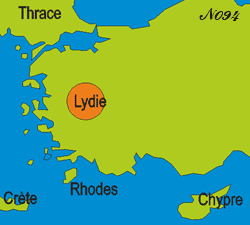 |
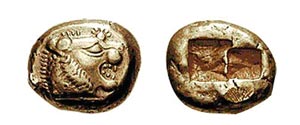 |
Lydia… |
…and its currency. |

Thaler.
https://fr.wikipedia.org/wiki/Histoire_de_la_monnaiehttps://fr.wikipedia.org/wiki/Monetaria_moneta
Rhetoric : Définition : Dictionnaaire Le Robert
A set of procedures constituting the art of good speech, of eloquence.
The deployment of eloquence, of oratory means, to persuade; emphatic and declamatory style.
Meta-analysis :
This term refers to the grouping of several independent studies on a given problem. As the number of cases studied increases, it is possible to draw more general conclusions.
https://www.vulgaris-medical.com/encyclopedie-medicale/meta-analyse
https://fr.wikipedia.org/wiki/M%C3%A9ta-analyse
Compassion :
Compassion is a feeling whereby an individual who feels the suffering of others is moved to do something about it.
https://fr.wikipedia.org/wiki/Compassion
Pleasure : Définition : Le Robert :
A pleasant sensation or emotion, connected with the satisfaction of a desire, a material or mental need.
What pleases someone to do, to order. What he considers good, what he wants.
Formula of the old edicts which marked the will of the king.
Desire : (Le Littré) Desire to obtain, to have something.
Insula and interoceptive consciousness :
The right anterior insula is involved in body awareness (or interoceptive awareness). There is a correlation between the volume of this area and the accuracy of body awareness.
The insular cortex is also involved in assessing the intensity of pain, whether felt or imagined.
https://fr.wikipedia.org/wiki/Cortex_insulaire
Ventral striatum :
Researchers at the Pitié-Salpêtrière Neuroscience Research Centre (Mathias Pessiglione's team, Inserm) sought to find out whether mental and physical efforts are driven by a common motivational centre or whether they are driven by separate parts of the brain.
To do this, the researchers subjected 20 volunteer participants to tasks combining mental and physical effort, while monitoring the brain work by fMRI.
The researchers were able to identify a general motivational system in the brain, in the area of the ventral striatum, which is capable of activating any type of effort, whether mental or physical.
« The ventral striatum could switch connections according to demand. It would amplify neuronal activity in the caudate nucleus for a cognitive operation, and in the putamen for a physical action. »

Ventral striatum.
https://www.santelog.com/actualites/neuro-le-striatum-ventral-pour-rester-motive-motive-motive6 - Education - developing moral sense :
Remuneration of adult subjects : The subjects in the study could receive the equivalent of one day's, two weeks' or five months' pay.
Edward L. Deci : Professor of Psychology and Social Sciences at the University of Rochester and Director of the Human Motivation Program. Known for his work on theories of intrinsic motivation and self-determination theory, he has influenced motivational management theory.
https://www.wikiberal.org/wiki/Edward_L._Deci
Money and the loss of empathy :Armin Falk, professor of economics (University of Bonn), conducted a study with 124 participants to assess the influence of money on their capacity for empathy.
They were given the choice between earning €10 and killing a mouse, or earning nothing and letting it live. 45% of them preferred the money.
In other situations where mice were the object of a commercial transaction, more than 70% of the participants opted for the sacrifice of the animals..